Last Chance: The Annual Orchid Show Soars at the New York Botanical Garden
The vibrant colors of Mexico come to NYC for a unique Orchid Show at NYBG!


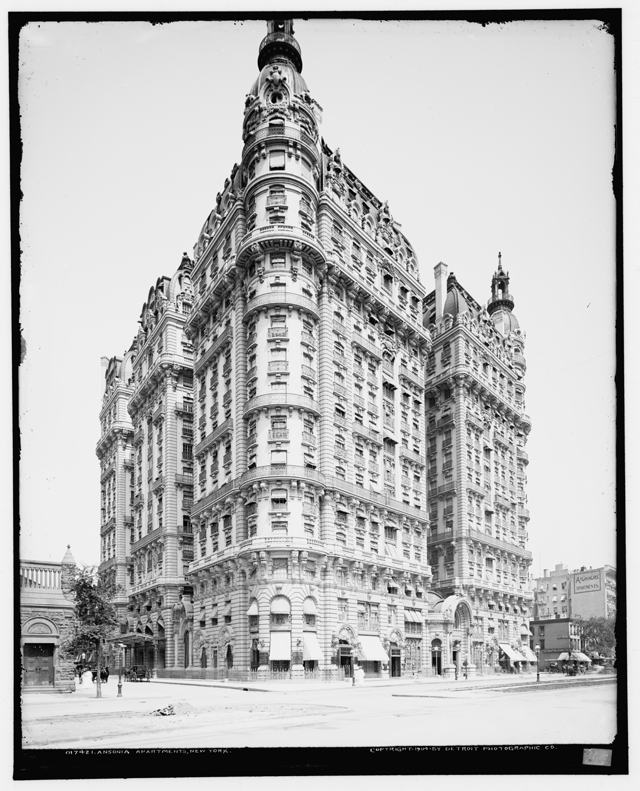
If there is one building that epitomizes the Upper West Side’s bohemian origins, it just might be The Ansonia with its rather scandalous and off-beat reputation. The Ansonia has been home to such a wide range of characters–from Babe Ruth to Igor Stravinsky to Natalie Portman–that it’s not surprising what an illustrious backstory it has. We decided to take a look back at a wonderful feature from New York Magazine in 2005 that revisits the ups and downs of the historic building (which had 1,400 rooms and 320 suites!) and share with you some of the most wild facts about the building.
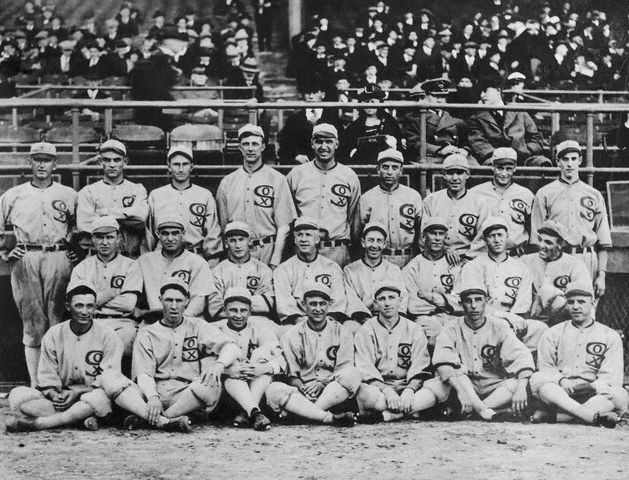
The Ansonia had always been popular amongst athletes and the mixing between professional sports and the mafia found a match in 1919, when a group of White Sox players agreed to lose the upcoming World Series for $10,000 a player in the room of baseman Arnold “Chick” Gandil. The operation was bankrolled by Arnold Rothstein, a racketeer who was the inspiration for mobster Meyer Wolfsheim in The Great Gatsby. Rothstein re-entered our cultural consciousness most recently as a character in Boardwalk Empire. For all the plotting, apparently the players didn’t practice to lose convincingly and after their 5-3 loss, they came under suspicion. Steven Gaines of New York Magazine calls it “baseball’s biggest scandal ever.”
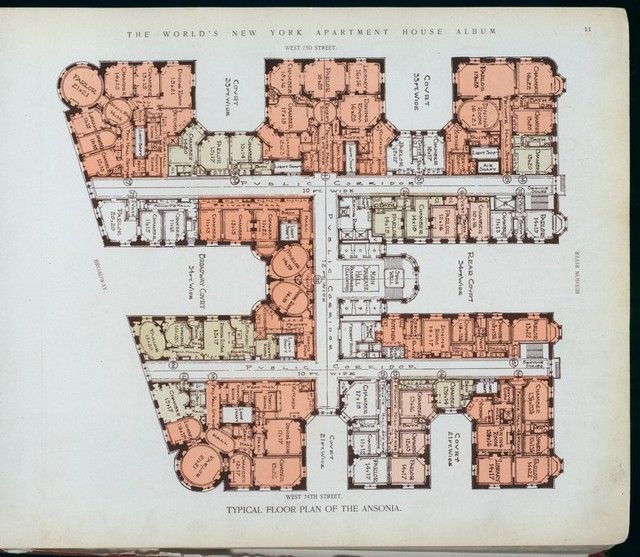
Pneumatic tubes were all the rage when the building was completed in 1904, and representing the latest in luxury of the time, The Ansonia had pneumatic tubes within its walls which moved messages between staff and tenants (and we assume between its famous tenants as well). Today in New York City you can see some remnants of the pneumatic tube system, which also once transported the mail underground.
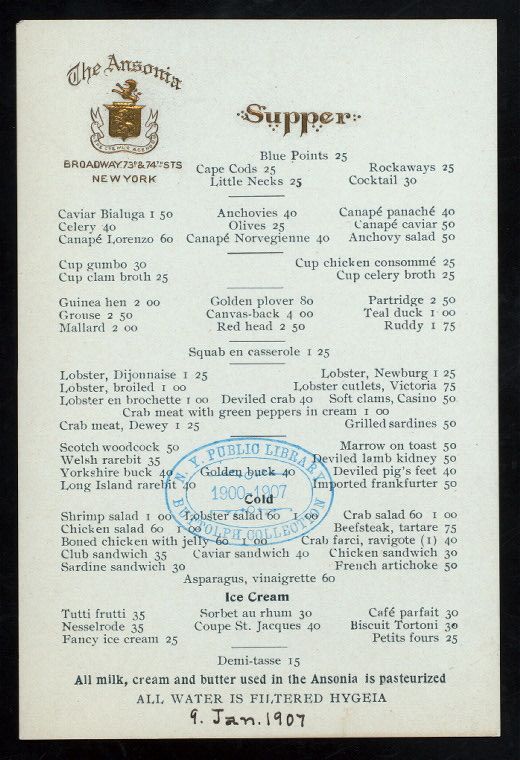
The developer of The Ansonia, William Earl Dodge Stokes, was the son of Caroline Stokes, the heiress to the Ansonia copper fortune. Part of his original Utopian vision for The Ansonia (far advanced for his time) was to have a self-sufficient building with its own rooftop farm. Unlike the rooftop farms popular in New York City today, this one had its own menagerie of livestock. Fresh eggs were delivered to tenants daily from the 500 chickens and surplus was sold in the basement to the public at cheap prices. The Department of Health got wind and shut down the operation, and like most other unwanted animals in New York City, they went to the Central Park Zoo. The article didn’t have much to say about the small bear, but we’d like to know more.
Other amenities in the building included a bank, dentist, physicians, apothecary, barbershop, flower shop, tailor, wholesale wine, liquor and cigar shop, and laundry.
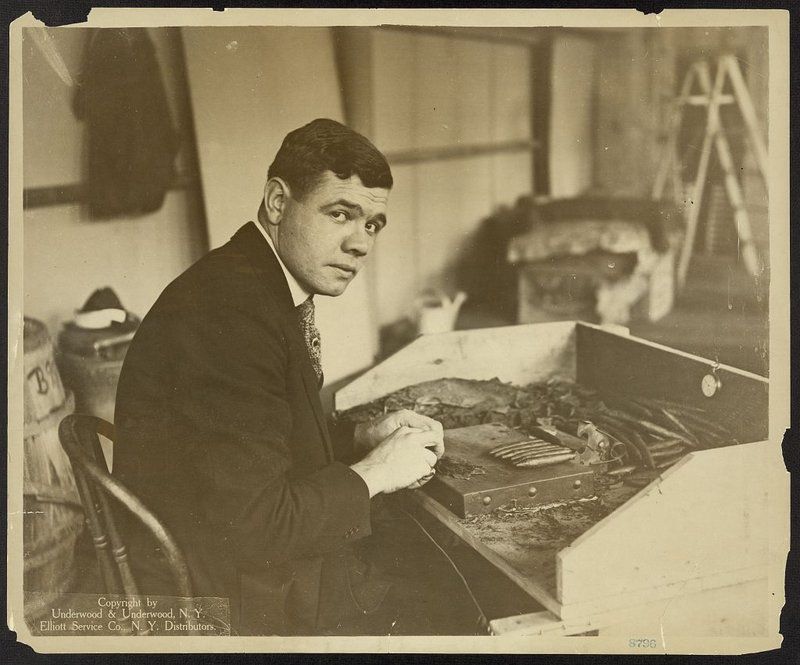
Many Yankees players made The Ansonia home, and Babe Ruth moved in with wife in tow after the Red Sox sold his contract to the New York team. Ruth’s apartment became a clubhouse for card games and parties. According to Gaines, Ruth “thought of the entire hotel as an extension of his apartment…[he] would sometimes wear his scarlet silk bathrobe down in the elevator to the basement barbershop for his morning shave. He was inspired to take up the saxophone while living at the Ansonia, and his squeaky bleatings were familiar up and down the hallways on his floor.”
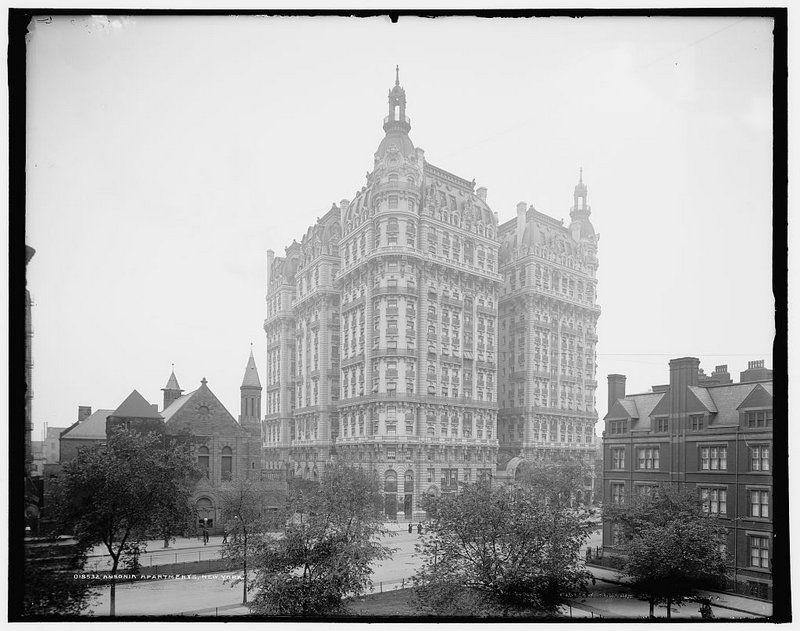
At 550,000 square feet, there was plenty of room for interior decor at The Ansonia. The hotel even had its own art curator, Joseph Gill-Martin, who collected 600 paintings to put on display.

The Ansonia got sold to a crooked landlord after Stokes’ death in 1945. When the landlord landed in jail, The Ansonia was sold to a Broadway sign manufacturer named Jake Starr who realized belatedly that the building had no certificate of occupancy from the city. It would take millions to get the building up to the latest code, so Starr decided to leave it abandoned.
The craziest years for The Ansonia pool really came later in the 1960s when Starr decided to rent out the pool and Turkish baths to an opera singer who sought to build a gay bathhouse reminiscent of the “glory of ancient Rome.” As described by Gaines, “the Continental Baths…was more Disneyland than hard-core sex palace (except for the orgy room, that is). It had palm fronds, flattering lighting, a waterfall that emptied into the pool, a discothèque, and, in one cubicle, drug dealers. A candy machine dispensed K-Y jelly, and a warning system of colored lights tipped off patrons when the vice squad dropped in.” Its cabaret was perhaps the most famous, with Bette Midler and Barry Manilow accompanying her only in a towel, and other emerging stars booked there.
In the late ’70s, the facilities became Plato’s Retreat, a swinger’s club with a 50-seat Jacuzzi, mattresses in the orgy room and a membership fee at the door of $30 per couple, which included open bar and buffet.
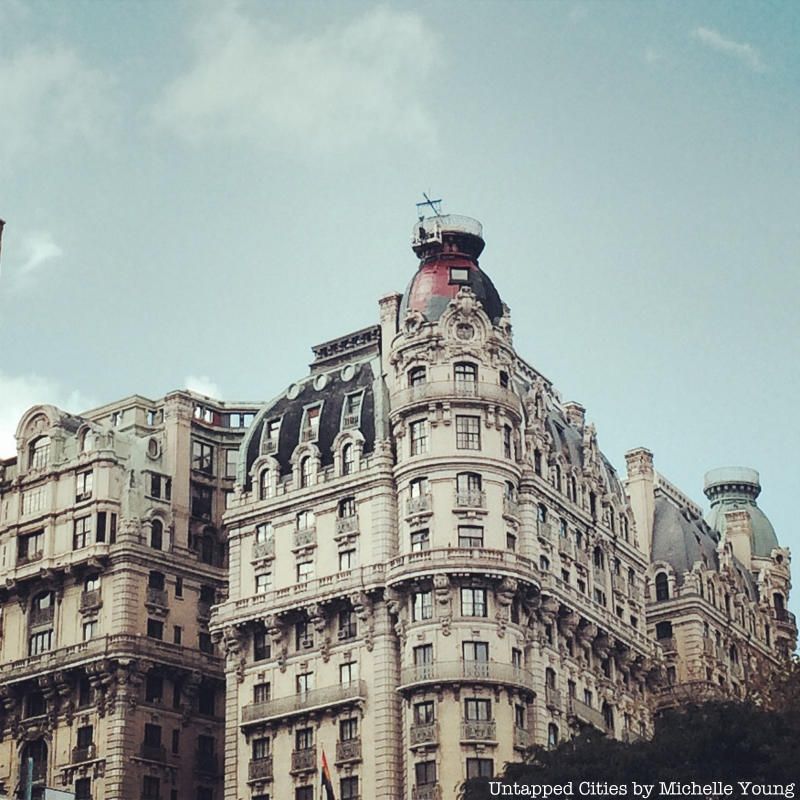
Not only the exterior ornament of The Ansonia came down in support of WWII. The pipes and pneumatic tubes were ripped out too, and the skylight which was the pinnacle of the winding marble staircase was tarred over for blackout regulations. It remains blacked out to this day, like the skylights at City Hall subway station.
Residential hotels like The Ansonia came under the protection of the Rent Stabilization Board in 1968. The tenants petitioned to freeze rents until repairs were made to the crumbling building. Pushed into a corner, owner Jake Starr proclaimed that the neighborhood would be better served if The Ansonia was demolished and replaced with a 40-story skyscraper. With extensive community petitioning, The Ansonia was named an exterior landmark.
During the era of Plato’s Retreat, a sex shop moved in as ground floor retail, fitted to the already unscrupulous reputation of The Ansonia. Today, The Ansonia is home to retailers like The North Face and American Apparel.
Jake Starr was so bitter about The Ansonia, his will specified that the money in his trust was not to be used for upkeep at The Ansonia. The building itself, with is myriad problems, was left to Starr’s grandchildren who eagerly hoped to get rid of it. During this time, The Ansonia became filled with bohemians of a different sort than the past: fortune tellers, psychic and mediums. On Sundays, “quasi-religious” services were held, sometimes to summon up dead celebrities.
In a labor of love, Jesse Krasnow and a group of 21 investors finally bought The Ansonia. It took $21 million to get the place up to standards, including $1 million to get rid of Plato’s Retreat. With decades of litigation with tenants, buyouts and more, Krasnow says he’s put in more than $100 million into the building.
Next, check out top 10 secrets of another turn-of-the-century architectural wonder, The Woolworth Building.
Subscribe to our newsletter